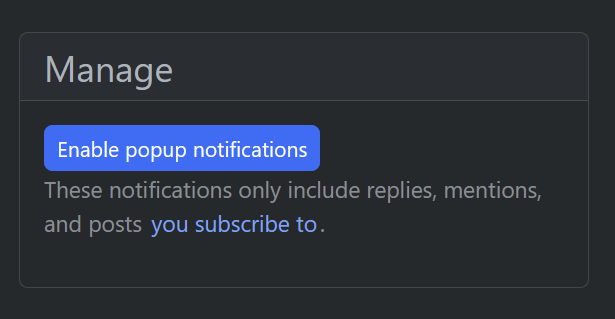This is actually a known issue: https://codeberg.org/rimu/pyfedi/issues/1018
The basic takeaway is that you must have already enabled notifications by clicking the enable button that shows up in that box. Then, since they are enabled, the button doesn't show up any more, so there is just an empty box left. To disable notification, you need to do that through your browser. It's on the list to make this UI a bit clearer at some point.
Edit: This is what it looks like if you don't have notifications enabled

Ok, I was able to reproduce this and made a PR for a fix. This issue only pops up when a user has instance blocks and works fine otherwise, which is why others in this thread (and myself when I was testing) aren't running into issues.
The root cause really is that I was creating schema for input and output validation to match the manually created swagger docs, but the output for
instance_blockswas different than specified (and I marked it as a required field, likely from a copy/paste error). So, thanks for helping us as we are going through endpoints and making them self-documenting.